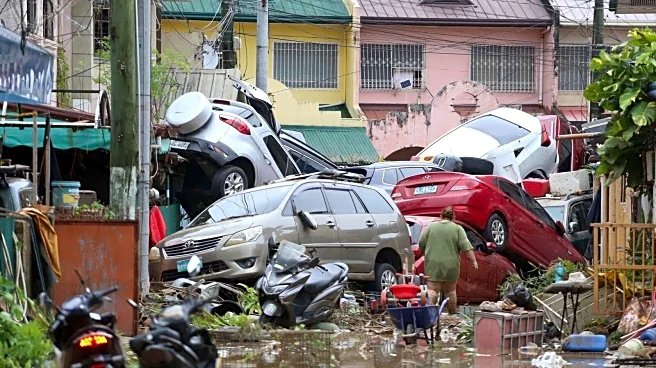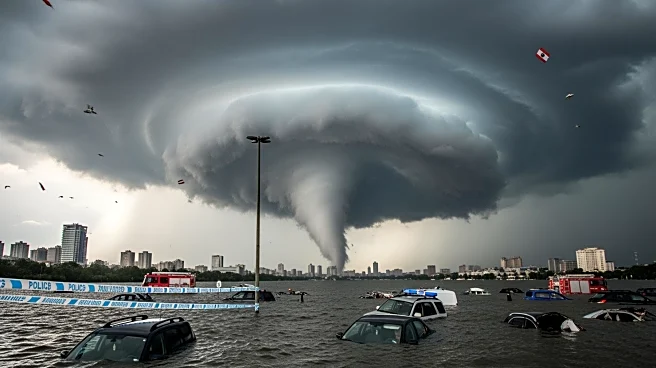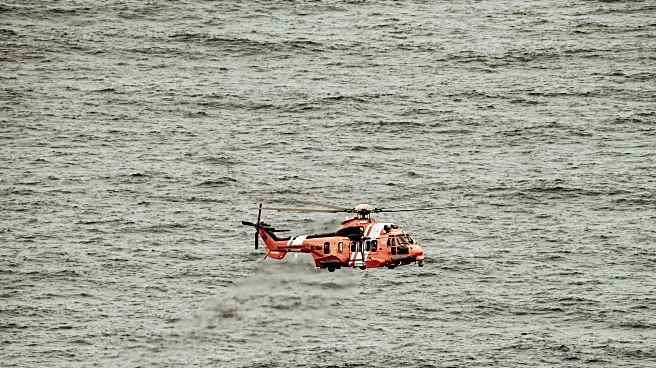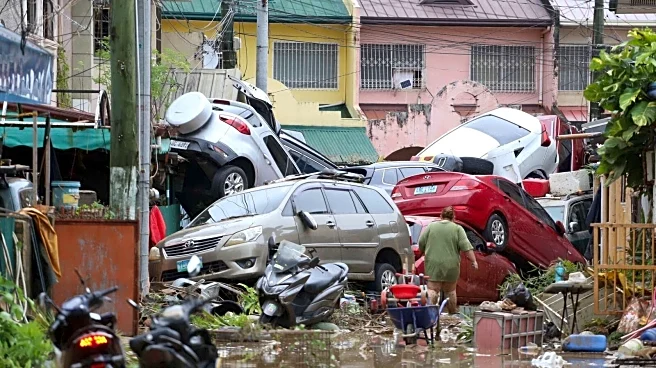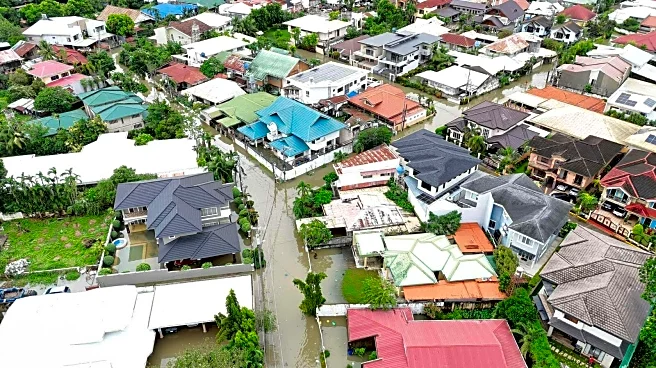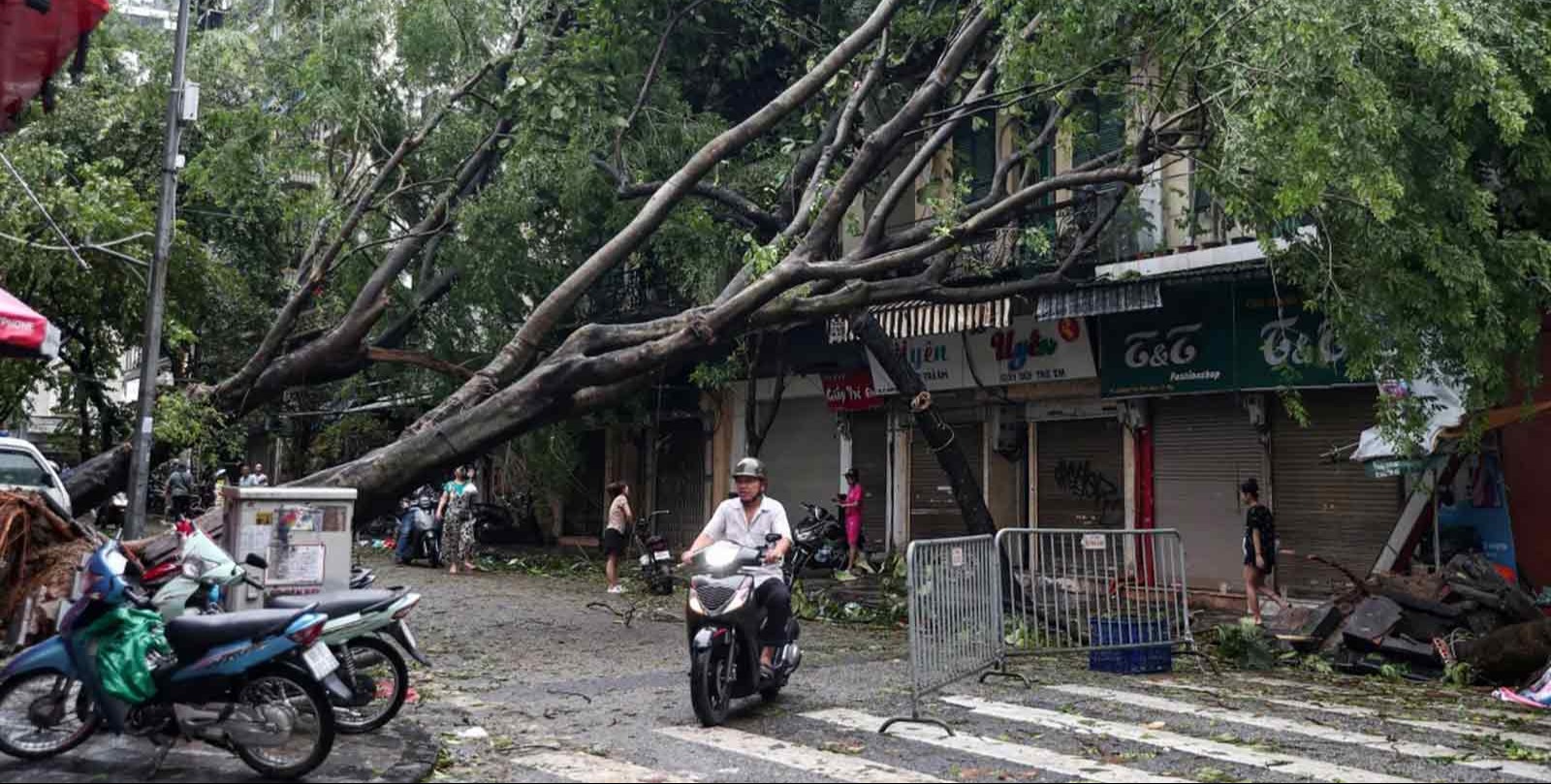What's Happening?
Typhoon Kalmaegi has caused significant destruction in the central Philippines, resulting in at least 26 fatalities, primarily due to flooding. The storm, which struck on Tuesday, has trapped numerous
individuals on rooftops and submerged vehicles. A Philippine air force helicopter, involved in humanitarian efforts, crashed in Agusan del Sur province, with efforts underway to locate the personnel on board. The typhoon, with winds reaching 130 kph and gusts up to 180 kph, is expected to move into the South China Sea. The storm has affected Cebu province, which is still recovering from a recent earthquake, and has led to widespread evacuations and power outages.
Why It's Important?
The impact of Typhoon Kalmaegi highlights the vulnerability of the Philippines to natural disasters, with the country experiencing around 20 typhoons annually. The storm's devastation underscores the need for robust disaster preparedness and response strategies. The economic and social implications are significant, as the affected regions face challenges in recovery and rebuilding. The typhoon's impact on infrastructure, such as power outages and transportation disruptions, further complicates relief efforts. The situation also raises concerns about the safety and effectiveness of emergency response operations, as evidenced by the helicopter crash during relief missions.
What's Next?
As Typhoon Kalmaegi moves towards the South China Sea, the focus will shift to recovery and rebuilding efforts in the affected areas. Authorities will need to address the immediate needs of displaced populations, including shelter, food, and medical care. Long-term strategies will involve rebuilding infrastructure and enhancing disaster resilience. The international community may also play a role in providing aid and support. Monitoring the storm's path will be crucial to prepare for any further impacts in the region.
Beyond the Headlines
The recurring nature of such natural disasters in the Philippines raises questions about climate change and its role in intensifying weather patterns. The country's geographical location makes it particularly susceptible to typhoons, earthquakes, and volcanic activity, necessitating ongoing investment in disaster risk reduction and climate adaptation measures. The cultural and social resilience of the Filipino people is often tested in these situations, highlighting the importance of community solidarity and support networks.


